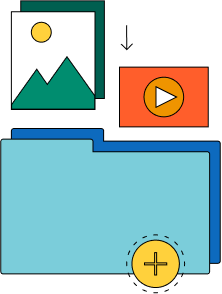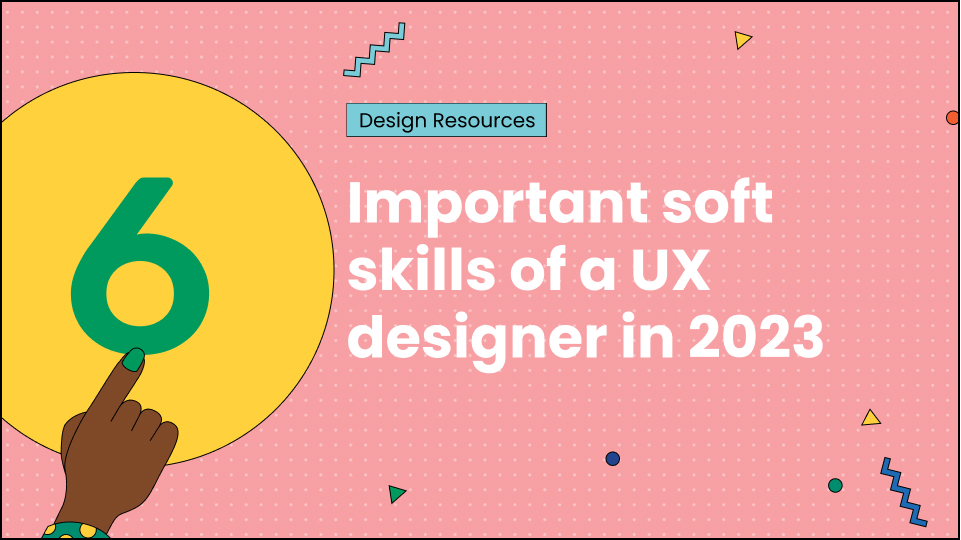The evolution of technology, trends, and consumer needs has turned UX design into an ever-evolving and demanding domain. In 2023, you’ll need to have an impactful presence and the important skills of a UX designer to grow.
And that means you need more than technical skills to become a better UX designer (and perhaps even the best one in your circle!).

As a User Experience designer, you must know the skills that make you the right fit for the role. Besides the technical skills UX designers should have, you must constantly strive to learn new skills to meet the growing demand. Your personality traits and mindset also play a role in succeeding as a better UX designer.
It would help if you had more than hard skills to succeed as a better UX designer. UX soft skills are equally crucial to producing deliverables. These skills are much more than add-ons to improve your resume. They complement your daily design activities.
In this article, we’ll go through the 6 essential UX soft skills you need to become a better UX designer.
Let’s start!
Cut design & video review time in half
Try GoVisually free today!
Table of Contents
Why are soft skills important for UX designers?
Hiring managers must look for three main skills when hiring better UX designers. Statistics show that around 73% of recruiters consider problem-solving and communication as top requirements when hiring UX designers.
UX designers often overlook UX soft skills. The reason is the tangibility of design deliverables. Soft skills seemingly bridge the gap and bind a range of disconnected UX activities. Soft skills make the design process a lot easier and stress-free.
Good communication ensures that deliverables meet users’ expectations and needs. The best part is that these skills are easy to learn yet make you a hot commodity for UX recruiters.
Scroll down to learn which UX design recruiters value soft skills for graphic designers.
6 highly demanded soft skills for a UX designer
As mentioned earlier, you must have certain soft skills for a graphic designer to pursue or excel in the UX design domain.
The following soft skills will make you an ideal candidate for a UX designer role:

1. Strong communication skills
Good communication is the solution to every problem.
UX designing, at the core, is all about satisfying users by offering them utility. This means it is pertinent for UX designers to know how to communicate with and comprehend the client’s instructions and what he wants out of a design project.
Other soft skills in graphic design can include presentations that rely on communication.
There are various scenarios where good communication is a lifesaver for a better UX designer, including:
- Building a good rapport with clients
- Pitching creative ideas to business stakeholders
- Collaborating with other team members to churn out creative designs
- Selling UX design value to clients or the management
- To get the best out of a brainstorming session
2. Problem solving mindset
Problem-solving is at the core of UX designing. The job of a better UX designer is to identify and solve users’ pain points.
Critical thinking and problem-solving are two soft skills every recruiter looks for in a UX design candidate. The best types of UX designer always looks at the bigger picture before making a major decision. They pay attention to finer details and inspect a problem from every possible perspective.
In most cases, prospective employers often ask candidates to work on a problem statement as a part of the evaluation process. Various recruiters ask candidates for UX-related roles to complete design challenges during the hiring process.
3. Understanding design and aesthetic principles
Staying true to the design process is as important as design tool proficiency for different types of UX designers.
A skilled UX designer knows how to use UX-specific software programs best and is familiar with design principles. They know where, when, and how to apply these principles in the design process.
The hallmark of a good designer is his strong commitment to research. They create, test, and iterate prototypes to produce the best deliverable possible within their capacity. They believe in evidence-based critique and are open to changing their designs accordingly. Questioning assumptions and steering clear of biases other positive attributes of the best types of UX designer’s soft skill sets.
Strong research is the foundation of a good UX design.
To succeed as a UX designer, you should be adept at using mental shortcuts to quickly judge a situation and use the most relevant problem-solving approach. You can create stunning interfaces by applying the gestalt law and visual design principles to your design project.
It becomes easier to understand why certain designs work better than others if you have a sound grasp of the underlying design principles. This knowledge makes it easier to understand what your competitors are doing right. As a result, you can make better design choices that improve user experience.
4. Open to collaboration and teamwork
Designers work in teams.
And so, the ability to collaborate is important to produce eye-catching UX designs.
With the evolution of creative needs, an entire team works towards creating an engaging and enjoyable user experience. In most cases, UX designers need to work with people from diverse backgrounds and with varied expertise. This makes the soft skill of collaboration crucial to succeed as a UX designer.
Working in cross-functional team results in an exceptional product design. It offers multiple perspectives and a well-rounded view of the issue at hand. It enriches the brainstorming process and makes it quick and easy to come up with a solution.
Moreover, most hiring managers prefer humility and coordination over most hard skills while hiring for design-related roles.
5. Storytelling
People tend to remember stories more than facts and figures.
Great designers know how good storytelling can do wonders for their business. They know how to capitalize on their audiences’ emotions and make them reach out for their wallets.
A good storyteller looks at things from the user’s perspective and steps into his audience’s shoes. He tries to understand users’ emotions and engages them through creative storytelling.
A good UX designer narrates a character’s story through personas and storyboards. His designs tell a story that prompts his choice of users’ emotions.
You can also listen to podcasts or read books to understand how other designers leverage storytelling.
6. Presentation skills
As a UX designer, you will need good presentation skills to present a design, research insight, creative solutions, an idea, or even yourself at some point in your career.
No matter what your goal is, there is nothing a good presentation can’t help you achieve. The presenter tries to convince or leads the audience toward a decision.
UX designers create experiences.
Preparing and delivering a presentation is the same. You must understand your audiences’ expectations and needs and communicate how your idea can solve their problems. An ideal presentation addresses an issue and presents a case that aligns with the audience’s goals. Whether building or pitching your idea or convincing recruiters to hire you as a designer, you can get it all with a well-crafted presentation.
Key takeaway
Remember, a UX designer with a healthy balance of hard and soft skills is a hot commodity for tech recruiters.
Technical skills will only take you so far. But if you want to unlock the secrets to lasting success, you’ll need to have the impactful soft skills of a UX designer.
Happy designing and learning!
Want to send big files?

Need a quick way to share large files and creative assets?
With GoVisually Share, it’s absolutely free! Try today.




